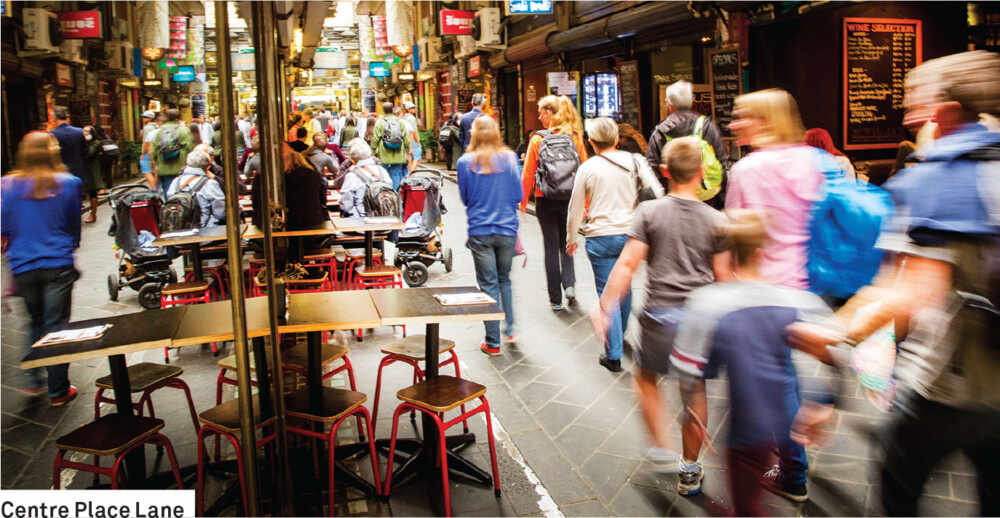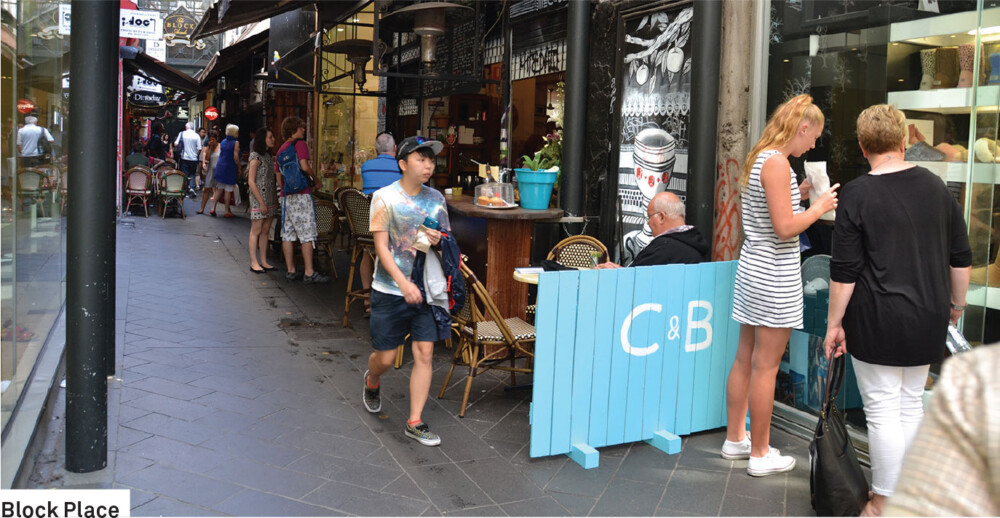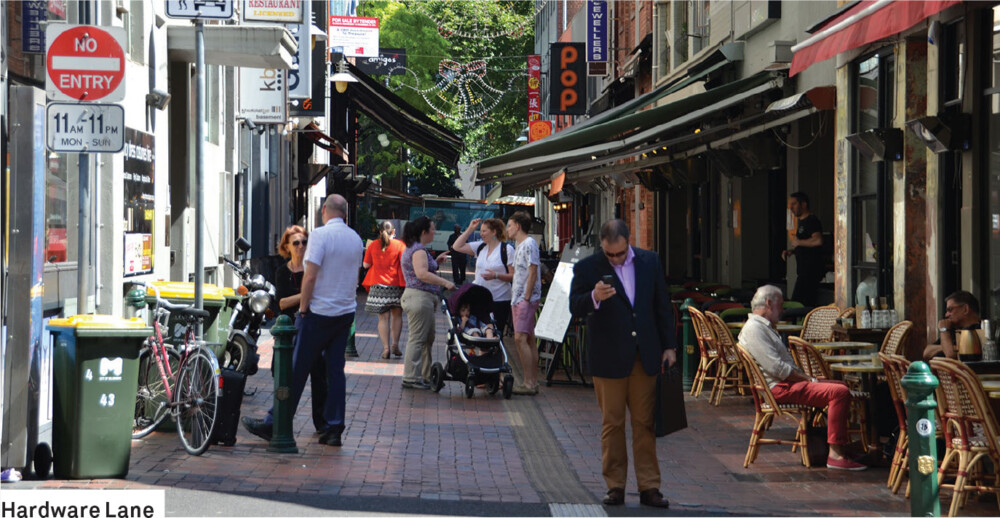-
About Streets
- Introduction
- Defining Streets
-
Shaping Streets
- The Process of Shaping Streets
- Aligning with City and Regional Agendas
- Involving the Right Stakeholders
- Setting a Project Vision
- Communication and Engagement
- Costs and Budgets
- Phasing and Interim Strategies
- Coordination and Project Management
- Implementation and Materials
- Management
- Maintenance
- Institutionalizing Change
- Measuring and Evaluating Streets
-
Street Design Guidance
- Designing Streets for Great Cities
- Designing Streets for Place
-
Designing Streets for People
- Utilities and Infrastructure
- Operational and Management Strategies
- Design Controls
-
Street Transformations
- Streets
-
Intersections
- Intersection Design Strategies
- Intersection Analysis
- Intersection Redesign
- Mini Roundabout
- Small Raised Intersection
- Neighborhood Gateway Intersection
- Intersection of Two-Way and One-Way Streets
- Major Intersection: Reclaiming the Corners
- Major Intersection: Squaring the Circle
- Major Intersection: Cycle Protection
- Complex Intersection: Adding Public Plazas
- Complex Intersection: Improving Traffic Circles
- Complex Intersection: Increasing Permeability
- Resources
Global Street Design Guide
-
About Streets
- Introduction
- Defining Streets
-
Shaping Streets
Back Shaping Streets
- The Process of Shaping Streets
- Aligning with City and Regional Agendas
- Involving the Right Stakeholders
- Setting a Project Vision
- Communication and Engagement
- Costs and Budgets
- Phasing and Interim Strategies
- Coordination and Project Management
- Implementation and Materials
- Management
- Maintenance
- Institutionalizing Change
-
Measuring and Evaluating Streets
Back Measuring and Evaluating Streets
-
Street Design Guidance
-
Designing Streets for Great Cities
Back Designing Streets for Great Cities
-
Designing Streets for Place
Back Designing Streets for Place
-
Designing Streets for People
Back Designing Streets for People
- Comparing Street Users
- A Variety of Street Users
-
Designing for Pedestrians
Back Designing for Pedestrians
- Designing for Cyclists
-
Designing for Transit Riders
Back Designing for Transit Riders
- Overview
- Transit Networks
- Transit Toolbox
-
Transit Facilities
Back Transit Facilities
-
Transit Stops
Back Transit Stops
-
Additional Guidance
Back Additional Guidance
-
Designing for Motorists
Back Designing for Motorists
-
Designing for Freight and Service Operators
Back Designing for Freight and Service Operators
-
Designing for People Doing Business
Back Designing for People Doing Business
-
Utilities and Infrastructure
Back Utilities and Infrastructure
- Utilities
-
Green Infrastructure and Stormwater Management
Back Green Infrastructure and Stormwater Management
-
Lighting and Technology
Back Lighting and Technology
-
Operational and Management Strategies
Back Operational and Management Strategies
- Design Controls
-
Street Transformations
-
Streets
Back Streets
- Street Design Strategies
- Street Typologies
-
Pedestrian-Priority Spaces
Back Pedestrian-Priority Spaces
-
Pedestrian-Only Streets
Back Pedestrian-Only Streets
-
Laneways and Alleys
Back Laneways and Alleys
- Parklets
-
Pedestrian Plazas
Back Pedestrian Plazas
-
Pedestrian-Only Streets
-
Shared Streets
Back Shared Streets
-
Commercial Shared Streets
Back Commercial Shared Streets
-
Residential Shared Streets
Back Residential Shared Streets
-
Commercial Shared Streets
-
Neighborhood Streets
Back Neighborhood Streets
-
Residential Streets
Back Residential Streets
-
Neighborhood Main Streets
Back Neighborhood Main Streets
-
Residential Streets
-
Avenues and Boulevards
Back Avenues and Boulevards
-
Central One-Way Streets
Back Central One-Way Streets
-
Central Two-Way Streets
Back Central Two-Way Streets
- Transit Streets
-
Large Streets with Transit
Back Large Streets with Transit
- Grand Streets
-
Central One-Way Streets
-
Special Conditions
Back Special Conditions
-
Elevated Structure Improvement
Back Elevated Structure Improvement
-
Elevated Structure Removal
Back Elevated Structure Removal
-
Streets to Streams
Back Streets to Streams
-
Temporary Street Closures
Back Temporary Street Closures
-
Post-Industrial Revitalization
Back Post-Industrial Revitalization
-
Waterfront and Parkside Streets
Back Waterfront and Parkside Streets
-
Historic Streets
Back Historic Streets
-
Elevated Structure Improvement
-
Streets in Informal Areas
Back Streets in Informal Areas
-
Intersections
Back Intersections
- Intersection Design Strategies
- Intersection Analysis
- Intersection Redesign
- Mini Roundabout
- Small Raised Intersection
- Neighborhood Gateway Intersection
- Intersection of Two-Way and One-Way Streets
- Major Intersection: Reclaiming the Corners
- Major Intersection: Squaring the Circle
- Major Intersection: Cycle Protection
- Complex Intersection: Adding Public Plazas
- Complex Intersection: Improving Traffic Circles
- Complex Intersection: Increasing Permeability
- Resources
- Guides & Publications
- Global Street Design Guide
- Streets
- Pedestrian-Priority Spaces
- Laneways and Alleys
- Case Study: Laneways of Melbourne, Australia
Case Study: Laneways of Melbourne, Australia

Location: Melbourne City Center; Melbourne, Australia
Population: 4.4 million
Extent: Extensive network of alleys and laneways
Right-of-Way: Approximately 5–10 m
Context: Mixed-use (Residential/Commercial)
Cost: Varies depending on laneway
Funding: City of Melbourne in partnership with local businesses
Speed: 0–5 km/h (Many laneways do not allow vehicle access. Some allow limited access.)
Overview
The revitalization of Melbourne’s laneways began in the early 1990s when the City of Melbourne and state government worked to protect and upgrade the remaining laneways. This was part of a larger regeneration program intended to bring people back to the city after work hours, and make the city an exciting, safe, and hospitable environment.
The streets were cleaned up, and active street frontages and mixed-use development were encouraged. The city worked with universities to encourage the large international student population to live in the city and bring along cultural diversity and energy to public areas.
An ongoing, temporary public art program was developed, bringing a sense of excitement and discovery to the laneways. Small local retailers, particularly cafés, were encouraged to move into the CBD and take up laneway spaces facing the street. Nighttime activity was encouraged with incentives for retailers to stay open for longer hours.



Key Elements
Pedestrian-priority spaces with no vehicular traffic.
Quality paving materials and custom designed lighting.
Removal of obstacles, bollards, curbs, and redundant street elements.
Improved cleaning, supervision of laneways, and wayfinding.
Activation including cultural and arts events.
Goals
Revitalize interest and activity in the city’s laneways.
Improve connectivity and legibility throughout the city center.
Provide a high-quality and attractive environment that supports businesses.
Encourage a diverse range of people to live and spend time in the city center.
Lessons Learned
Partnerships with building owners are key to the success of laneways.
Partnership between the municipality and small retailers has generated investment in laneway projects.
Curbside dining proved successful even during colder seasons.
Melbourne’s laneways have become a highly popular tourist attraction.
Involvement
City of Melbourne, local business associations, artist collectives, and resident associations.

Melbourne laneways site map
A few of the best-known laneways in downtown Melbourne create a series of shortcuts for pedestrians to navigate the city center.
- Malthouse Lane
- Hosier Lane
- Degraves Street
- Centre Place Lane
- Block Place
- Union Lane
- McKillop Street
- Hardware Lane
Project Timeline
1980–Today

During the 19th and 20th centuries the laneways were privatized, closed off, built in, and neglected.
However, in the 1990s, the true potential of the laneways was identified. Since then, efforts have been made to upgrade and further develop the laneways.
Adapted by Global Street Design Guide published by Island Press.